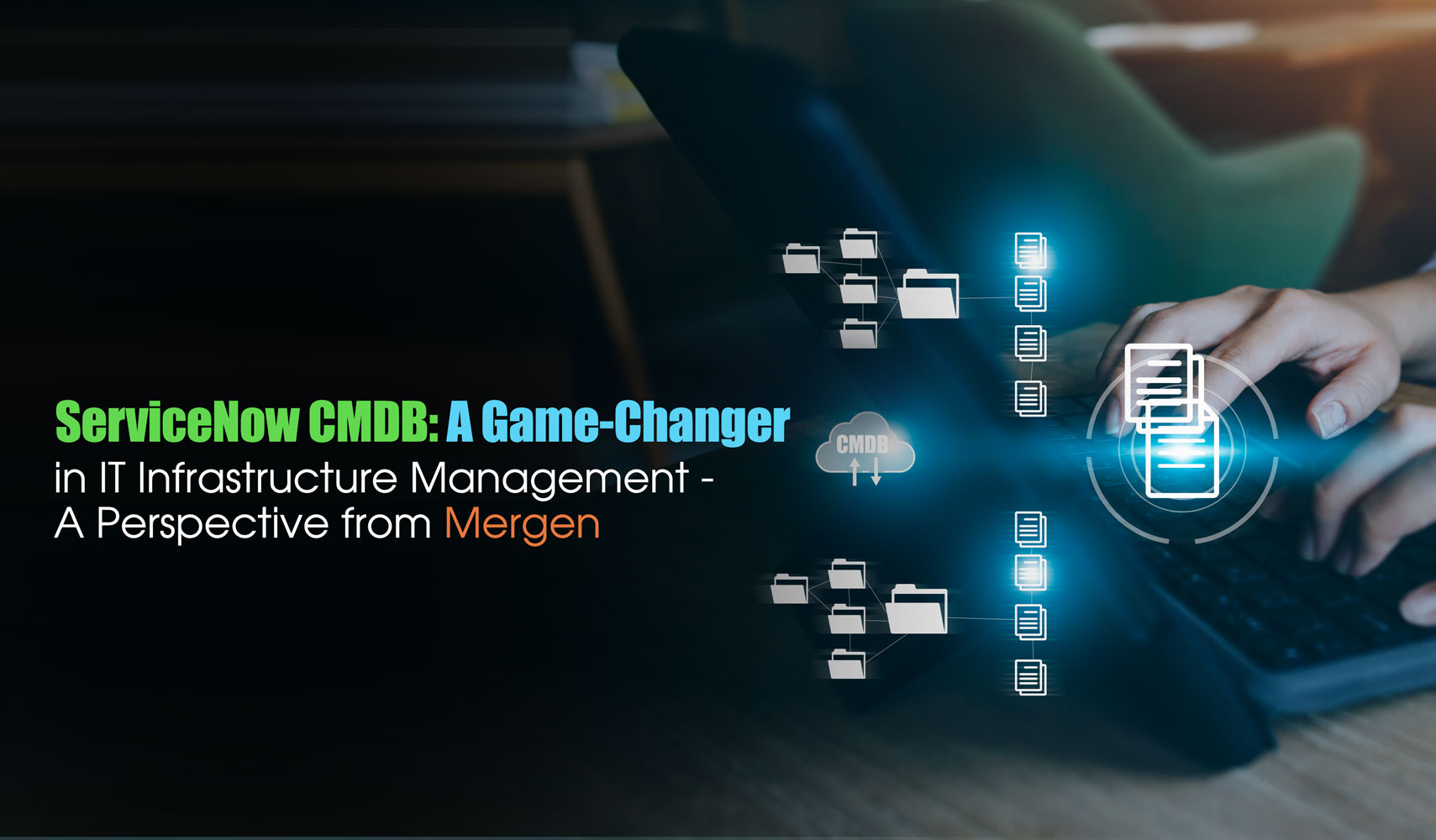
In today's digital age, businesses are powered by complex IT infrastructures. The ability to have an accurate, up-to-date view of this environment is critical. It enables faster resolution of service issues, reduces operational and security risks, lowers costs, increases agility, and facilitates better business and technical decisions. However, achieving this visibility is a moving target due to the rapid proliferation of software, virtualized infrastructure, cloud services, containers, and mobile devices.
As a ServiceNow partner, we at Mergen IT have witnessed how the ServiceNow® Configuration Management Database (CMDB) has revolutionized the way businesses manage their IT infrastructure and digital service data.
Single System of Record
The ServiceNow CMDB serves as a cloud-based single system of record for your IT infrastructure and digital service data. It works seamlessly with your ServiceNow applications, delivering out-of-the-box value across the entire IT value stream. This includes diagnosing service outages, evaluating the service impact of changes, managing assets, improving compliance, and more.
Real-Time Visibility
One of the standout features of the ServiceNow CMDB is its ability to support dynamic virtualized and cloud environments. This provides real-time visibility, a crucial requirement in today's fast-paced IT landscape.
Consistent and Extensible Data Model
The ServiceNow CMDB is built on a single data model with a standard taxonomy, predefined semantics, consistent format, data quality standards, and common processes. This ensures that every ServiceNow application can use CMDB data out of the box and work seamlessly with each other.
Automatic Population from Multiple Sources
When paired with ServiceNow® ITOM Discovery, the CMDB can automatically populate with infrastructure data from multiple sources. This includes both physical and logical infrastructure CIs—such as containers, virtual machines, storage, databases, and applications—as well as the relationships between these CIs.
Data Integrity and Health
The ServiceNow CMDB provides multiple ways to ensure data correctness, completeness, and compliance. These include an automated mechanism to prevent duplicate CIs, comprehensive health dashboards, on-demand and scheduled data certification, and automated remediation workflows.
Powerful Visualization and Reporting
The ServiceNow CMDB offers a clear graphical view of complex IT infrastructure and service relationships. Users can drill down from top-level service maps into specific CI data, visualize planned and unplanned changes on a history timeline, and overlay in-flight incidents, problems, and changes on displayed maps.
Mergen – Your Specialist ServiceNow Partner
Mergen as a ServiceNow specialist partner plays a crucial role in leveraging the capabilities of the ServiceNow Configuration Management Database (CMDB) to deliver valuable solutions across the entire IT value stream. Here’s how we achieve this:
Diagnosing Service Outages: The CMDB serves as a centralized repository for reliable information about various components within an organization’s IT infrastructure. It captures details related to software, hardware, servers, applications, and even cloud services. When service outages occur, the CMDB becomes a critical resource. By linking remediation actions directly to specific Configuration Items (CIs), specialists can diagnose and address issues more efficiently. Additionally, event management, when combined with service maps, simplifies the understanding of how problems propagate across business services, ultimately aiding faster resolution.
Evaluating Service Impact of Changes: Change management is a delicate process, especially when it comes to IT systems. The CMDB plays a vital role here by maintaining a comprehensive record of configuration items and their relationships. When changes occur—whether it’s a software update, hardware replacement, or network modification—the CMDB helps assess the potential impact on services. Armed with this information, organizations can make informed decisions, minimize risks, and ensure smoother transitions during change management processes.
Managing Assets: Efficient asset management is essential for any organization. The CMDB tracks assets, including hardware, software licenses, and other resources. By maintaining accurate records of asset lifecycles, specialists can optimize resource utilization, minimize waste, and reduce unnecessary costs. Whether it’s tracking physical servers, virtual machines, or software licenses, the CMDB streamlines asset management, leading to better resource allocation and financial savings.
Improving Compliance: Compliance requirements often involve tracking configurations, licenses, security policies, and adherence to industry standards. The CMDB acts as a reliable source of truth, ensuring that information remains accurate and up-to-date. During compliance audits, having a well-maintained CMDB becomes crucial. Organizations can demonstrate their commitment to regulatory requirements by showcasing their adherence to established standards. Whether it’s GDPR, HIPAA, or industry-specific guidelines, the CMDB contributes significantly to compliance efforts.
Conclusion
Mergen harnesses the power of the CMDB to enhance operational efficiency, reduce downtime, and drive better decision-making across the IT landscape. By leveraging out-of-the-box features and customizing solutions, we empower organizations to achieve their IT goals effectively. In conclusion, the ServiceNow CMDB is a game-changer in IT infrastructure management. It breaks down data silos, keeps pace with dynamic cloud environments, and ensures data integrity and health. As a ServiceNow partner, Mergen IT is excited to help businesses leverage this powerful tool to drive their digital transformation journey.
Allow our IT professionals to identify your company's needs and help you
save time and the cost of your business.